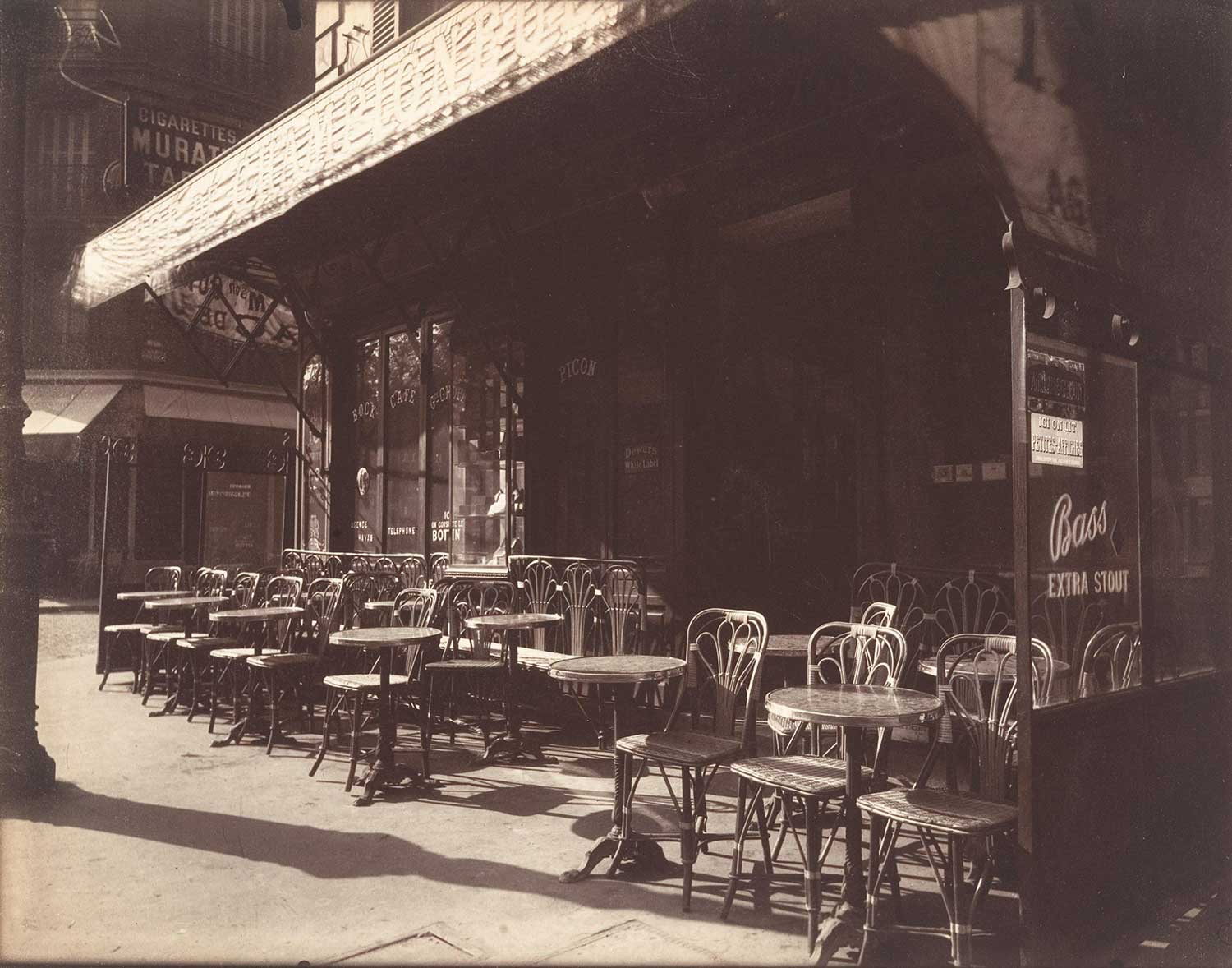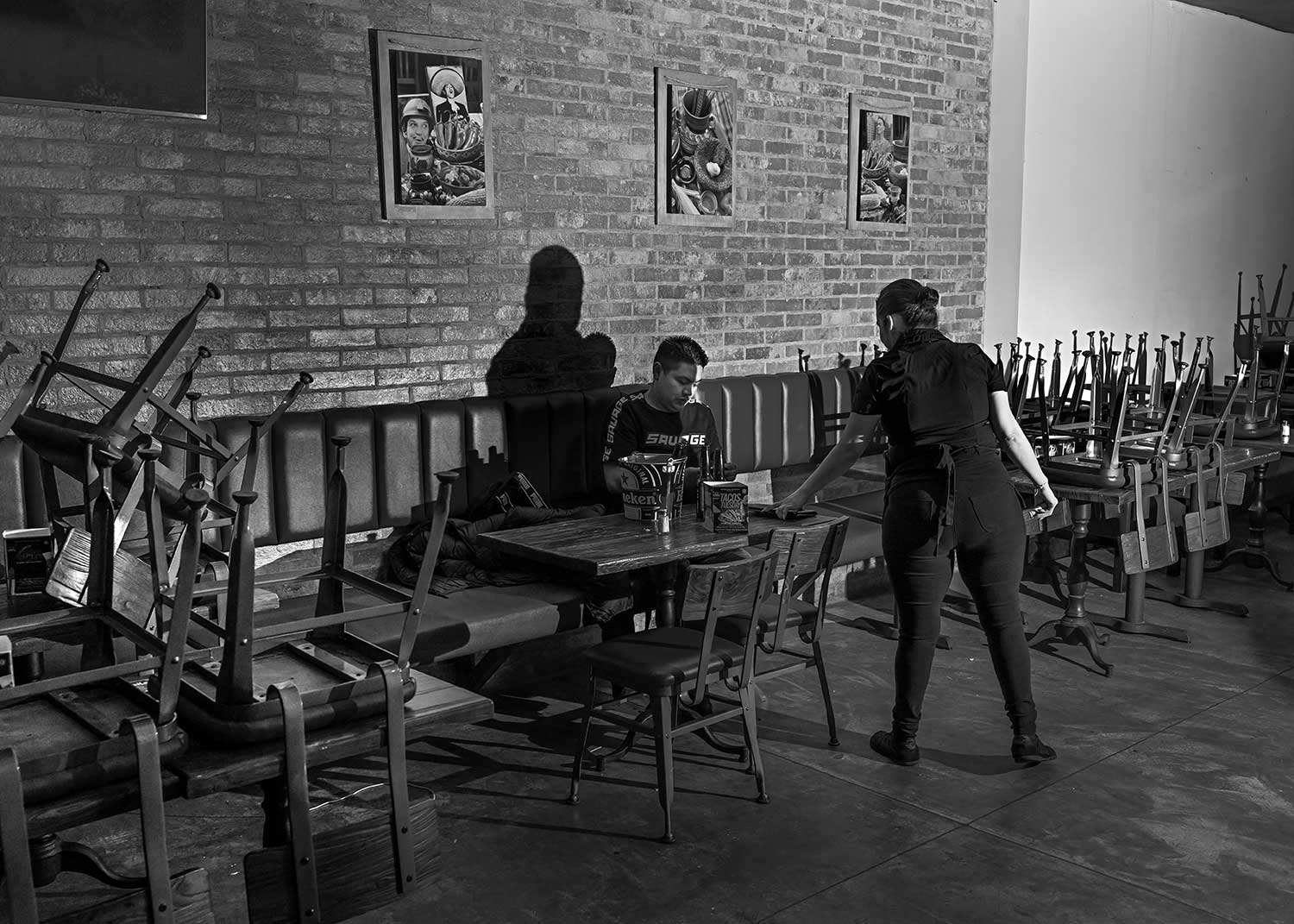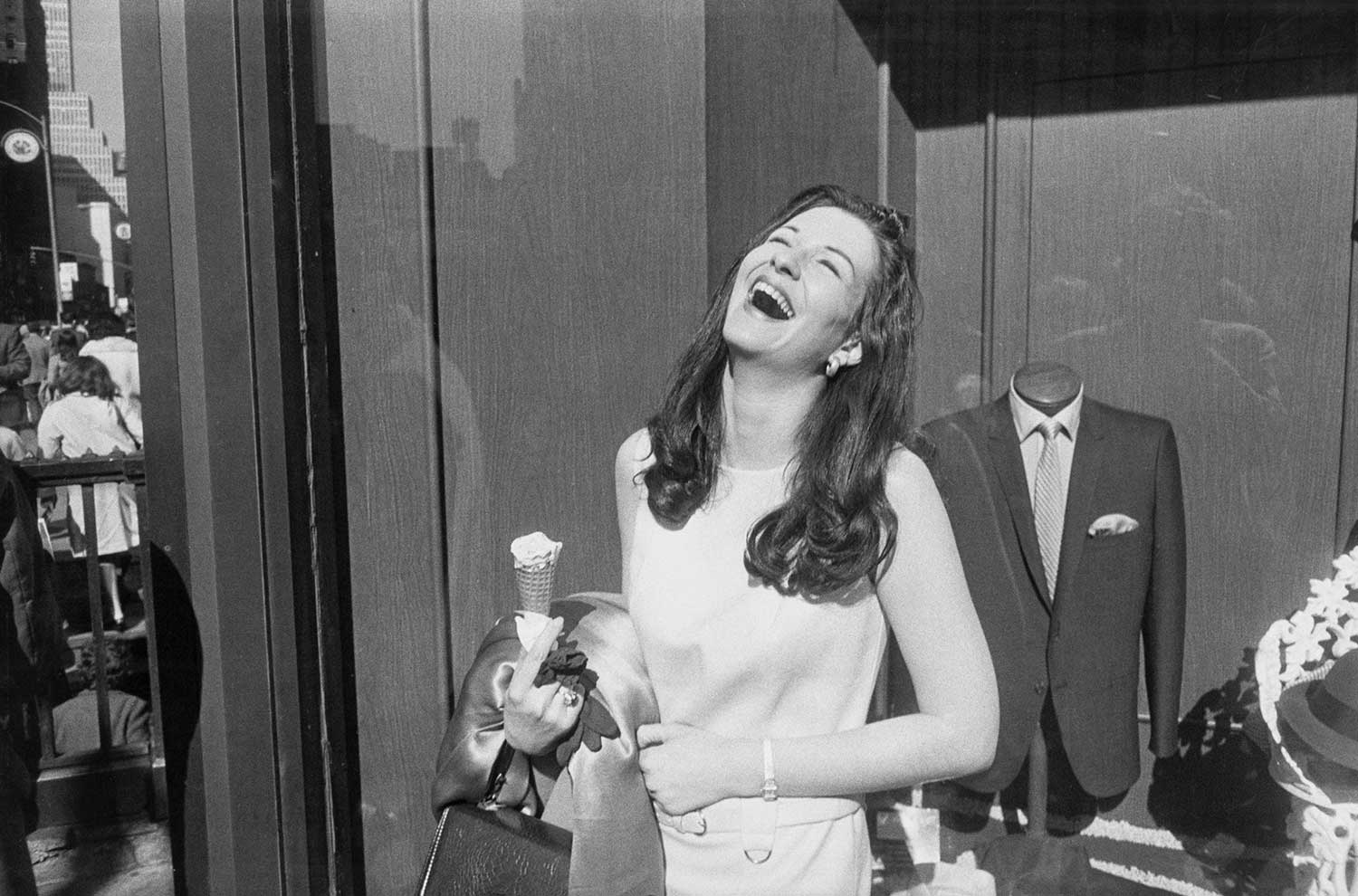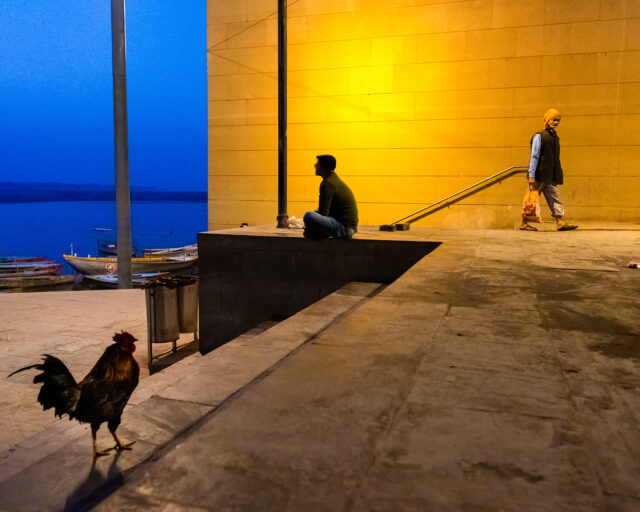What Is Street Photography without Street Life?
So here we are, thrown back to the dawn of street photography! I still remember the thrill I got when I first read that the streets in photographs of nineteenth-century cities weren’t really as empty as they looked—and as ours are now. It was because the slow shutter speeds vaporized or disappeared any people, horses, and carriages moving quickly. London and Paris became cities of the dead, haunted by the faint ghosts of anyone moving slowly or shifting position slightly. Only the rigidly unmoving remained substantial and intact, fully corporeal.

The Metropolitan Museum of Art, New York and courtesy Art Resource, NY
What I find extraordinary now is that I ever took these photographs of empty cities at face value, as it were, since I knew from the densely populated novels of Honoré de Balzac and Charles Dickens how these streets were full of characters bumping into or evading each other according to the needs of the bulky mechanics of theme and plot. In London, even the pollution—the famous fog of Dickens’s Bleak House (1853)—was not just visible, but palpable. It seems that two contradictory versions of the same place—one crowded, the other deserted—were able to coexist in my head. The idyllic quality of the latter, which became more pronounced as pressure was applied by the former, found apocalyptic expression in the opening sequence of an empty Westminster in Danny Boyle’s 2002 zombie movie, 28 Days Later. The nearest one could come to glimpsing this future in the actual life of the present was emerging from a nightclub at six o’clock on a Sunday morning to find the waiting world devoid of life except for a few saucer-eyed and friendly zombies (as corroborated by Richard Renaldi in his 2016 book Manhattan Sunday).

© the artist
A version of this experience animates Sebastian Schipper’s film Victoria (2015), when the eponymous heroine leaves a club with her new acquaintances to pursue a real-time, single-take adventure in the Berlin dawn. On a smaller scale, Claude Lelouch’s C’etait un rendezvous (1976) features an eight-minute, high-speed journey through Paris, filmed in one take by a camera attached low down, near the front bumper of a car driven by the stunty auteur—at 5:30 am on a Sunday morning in August. It’s not just exciting, it’s terrifying, because although most Parisians are either en vacance or asleep, the city is not empty. The risk is all too real.
Nowadays, even trundling a shopping trolley through Whole Foods feels risky but, as far as I know, photographers have not yet been able to capture the psychic terror of the times. The source of the threat is invisible and its effects, overwhelmingly, are of absence. Its symbol, the mask, hides from view.

© The Metropolitan Museum of Art
The camera can only film what is there. So, as John Szarkowski pointed out, while it was possible to construct a memorial to the murdered President Lincoln sitting in a chair, photography was left only with the chair. As a result, empty chairs were themselves altered by the invention of photography. A picture taken by Eugène Atget in 1924–25 of empty chairs outside a Paris café, Szarkowski suggests, is imbued with the thought of soldiers who did not return from the battlefields of the First World War. Published recently in the New Yorker, Philip Montgomery’s photographs of chairs stacked up in cafés attest to what might be termed the consistent contrary of the scene recorded by Atget: the hope of an eventual return of customers and life from the dead time of lockdown.

Courtesy the artist
And what of the streets themselves? Garry Winogrand did not like being called a street photographer. Referring to his book The Animals (1968), he said he might as well be called a zoo photographer, but our current predicament shows the limits of his objection. If its cages are empty, a zoo is no longer a zoo, while an empty street remains a street. What’s happened is that street photography has been obliged to become a species of architectural photography. And while it used to be necessary, if you wanted to concentrate on the buildings, to get out of bed as early on a Sunday as Lelouch, there is no longer any need to set your alarm. Time has largely been taken out of the day (just as the days have been taken out of the week), so that the street can be surveyed in its Giorgio de Chirico–like emptiness at all hours. There is no urgent need now to have a Leica loaded with high-speed film, since the fleeting rhymes caught by Henri Cartier-Bresson and Helen Levitt or the collisions jumped on by Winogrand are few and far between. This, instead, is the domain of the large-format view camera. The terror is manifest as its opposite: a ubiquitous visual calm—the opposite of a riot or carnival—which only accentuates the unphotographable wail of ambulances.

© The Estate of Garry Winogrand and courtesy Fraenkel Gallery, San Francisco
The loss of life from COVID-19 is potentially huge, and the loss of street life necessary to minimize that loss involves the loss of almost everything that makes the life of the street photographer worth living. Winogrand has often been lambasted for leching his way around the streets of New York. He was not shy about admitting that whenever he saw an attractive woman, he wanted to photograph her, and there is ample evidence, to put it mildly, of how doggedly he pursued this ambition. With so much going on, however, an element of this endeavor—and of his work more generally—is easily overlooked: namely, its lyricism. It’s not just that he occasionally conveys that enduring phenomenon, love at first sight. Sometimes in life, this first sight can lead to thirty years of marriage, an outcome that lies beyond the severely limited scope of the picture frame. More usually, on the street, it evaporates—due in no small measure to the necessary observance of decorum and respect—even as it is experienced. The moment it occurs is followed, almost instantly, by its disappearance. And that—unlike the terror—is something that the camera, in sufficiently dexterous hands, has proved itself highly capable of recording: the eternal and transient romance of the street. It is masked and much missed.

























